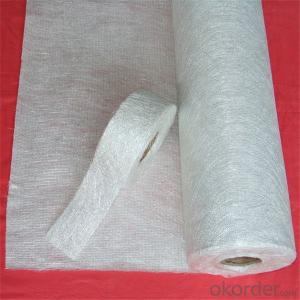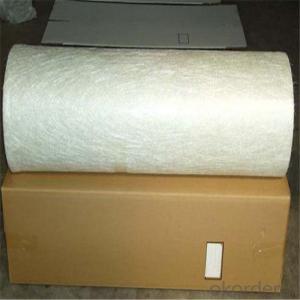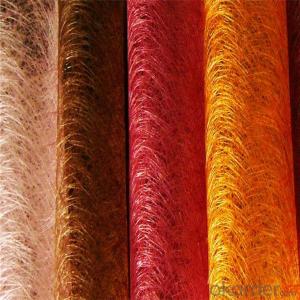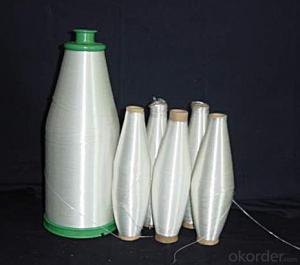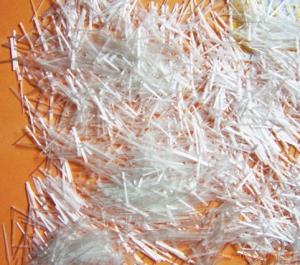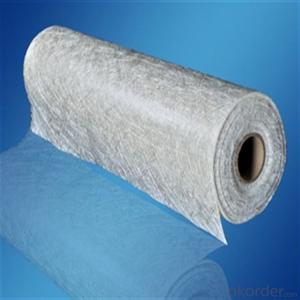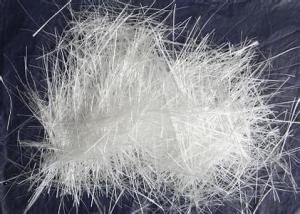Fiberglass Chopped Stand Mat for Boats
- Loading Port:
- Tianjin
- Payment Terms:
- TT OR LC
- Min Order Qty:
- 100 m.t.
- Supply Capability:
- 100000 m.t./month
OKorder Service Pledge
OKorder Financial Service
You Might Also Like
Quick Details
| Technique: | Chopped Strand Fiberglass Mat (CSM) | Dimensions: | 225g/m2-900g/m2 | Fiberglass Type: | E-Glass |
| Place of Origin: | China (Mainland) | Brand Name: | cnbm | Model Number: | 300G-900G |
| moisture: | ≤0.2% | combustion content: | 2.1-6.3% | binder type: | emulsion or powder |
| width: | 1040,1270,2080mm |
Packaging & Delivery
| Packaging Details: | plastic bag then carton then pallet |
| Delivery Detail: | 15 days after payment |
Advantage
1. Chopped strand mat is made up from fiberglass chopped strands bonded with powder binder or emulsion binder
2. Wet out faster and easy of handling
3. Good choppability
4.thickness uniformity
Apllication
fiberglass chopped strand mat
It is used for processing and manufacturing FRP products with getting through hand lay up process, filament winding process and press molding. Typical products is including bathroom accessories, pipe, building material, automobile, furniture, vessel, cooling towers and other FRP products
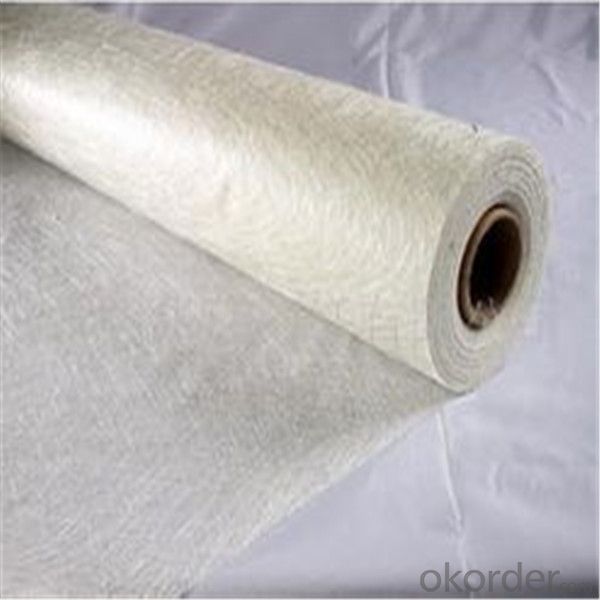

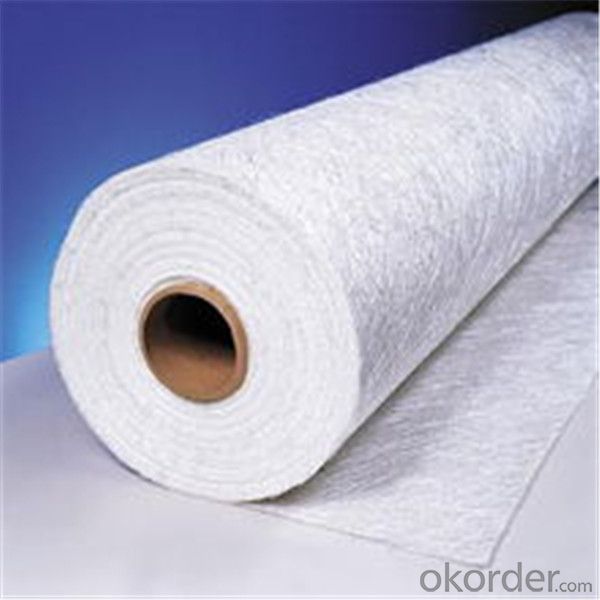
- Q:Can fiberglass chopped strand be used in the production of water pipes?
- Yes, fiberglass chopped strand can be used in the production of water pipes. Fiberglass is a versatile material that offers several advantageous properties for water pipe manufacturing. It has high strength and rigidity, which makes it suitable for handling the pressure and stress associated with water distribution systems. Fiberglass is also corrosion-resistant, meaning it can withstand exposure to various chemicals and minerals present in water without deteriorating. Additionally, it is a lightweight material, making it easier to handle and transport during the production and installation processes. Moreover, fiberglass has excellent insulating properties, which can help maintain the temperature of the water flowing through the pipes. Overall, using fiberglass chopped strand in the production of water pipes can result in durable, long-lasting, and reliable infrastructure for water distribution.
- Q:Is fiberglass chopped strand suitable for reinforcement in concrete?
- Yes, fiberglass chopped strand is suitable for reinforcement in concrete. It provides enhanced tensile strength, improves durability, and prevents cracking in concrete structures. It is corrosion-resistant, lightweight, and easy to handle, making it an effective alternative to traditional steel reinforcement.
- Q:Can fiberglass chopped strand be used in electrical applications?
- Yes, fiberglass chopped strand can be used in electrical applications. Fiberglass chopped strand is made by cutting continuous strands of fiberglass into shorter lengths and can be used as a reinforcing material in various applications, including electrical components. Fiberglass chopped strand provides excellent mechanical strength and electrical insulation properties, making it suitable for use in electrical insulation materials, circuit boards, electrical enclosures, and other electrical components. It helps to improve the strength, durability, and electrical performance of these applications, making them more reliable and efficient. Additionally, fiberglass chopped strand can also be combined with resins to create composite materials with enhanced electrical properties for specific electrical applications.
- Q:Can fiberglass chopped strand be used for reinforcing foam materials?
- Fiberglass chopped strand is capable of reinforcing foam materials, thereby enhancing their strength and durability. By combining the fiberglass chopped strand with foam, the foam material becomes more resilient and less prone to bending or breaking. Consequently, this combination proves advantageous in various applications such as insulation, packaging, and composite materials. The inclusion of fiberglass chopped strand fortifies the foam, resulting in improved structural integrity and overall performance. In addition, the fiberglass chopped strand also bolsters the foam's fire resistance properties, making it a viable option for applications that prioritize fire safety. All in all, utilizing fiberglass chopped strand to reinforce foam materials is an effective and economical means of augmenting their strength and durability.
- Q:Can fiberglass chopped strand be used in fire-resistant applications?
- No, fiberglass chopped strand is not suitable for fire-resistant applications as it is a flammable material.
- Q:How does the impact resistance of fiberglass chopped strand compare to other reinforcing materials?
- The impact resistance of fiberglass chopped strand is generally higher compared to other reinforcing materials. This is due to the inherent strength and flexibility of fiberglass, which allows it to withstand impacts without fracturing or breaking. Additionally, the random orientation of the chopped strands in the fiberglass matrix helps distribute and absorb impact forces more effectively. This makes fiberglass a preferred choice for applications where impact resistance is a critical requirement.
- Q:Can fiberglass chopped strand be used for reinforcing wood materials?
- Yes, fiberglass chopped strand can be used for reinforcing wood materials. It is commonly used in combination with resins to strengthen and reinforce wood structures, providing increased durability and resistance to bending, cracking, and warping.
- Q:How does the dispersion of fiberglass chopped strand affect its performance?
- The dispersion of fiberglass chopped strand can significantly affect its performance. When the chopped strands are well dispersed, they are evenly distributed throughout the matrix material, resulting in improved mechanical properties and overall performance. Proper dispersion ensures that the chopped strands are fully wetted by the matrix material, allowing for effective transfer of stress between the two components. This leads to enhanced strength, stiffness, and impact resistance of the composite material. Additionally, good dispersion prevents the formation of clusters or agglomerates, which can create weak points in the material and reduce its performance. These clusters can act as stress concentrators, increasing the likelihood of crack initiation and propagation, ultimately leading to reduced durability and structural integrity. Moreover, the dispersion of chopped strand also affects the surface finish and appearance of the final product. When the strands are well dispersed, they are more likely to be evenly distributed in the matrix, resulting in a smoother and more uniform surface. On the other hand, poor dispersion can lead to visible fiber streaks or uneven texture, negatively impacting the aesthetic appeal of the composite material. In summary, the dispersion of fiberglass chopped strand plays a critical role in determining the performance, strength, durability, and appearance of the composite material. Proper dispersion ensures optimal stress transfer and prevents weak points, ultimately leading to improved mechanical properties and overall performance of the final product.
- Q:How does the fiber dispersion uniformity of fiberglass chopped strand affect the quality of composites?
- The fiber dispersion uniformity of fiberglass chopped strand plays a crucial role in determining the quality of composites. If the fiber dispersion is not uniform, it can result in uneven distribution of fibers within the composite material. This can lead to weak spots and reduced mechanical properties, such as lower strength and stiffness. Additionally, non-uniform fiber dispersion can cause resin-rich or resin-starved areas, affecting the overall homogeneity and integrity of the composite. Therefore, achieving a high level of fiber dispersion uniformity is essential for producing high-quality composites with consistent and reliable performance.
- Q:How does the fiber aspect ratio affect the performance of fiberglass chopped strand?
- The fiber aspect ratio refers to the ratio of the length to the diameter of the fiberglass chopped strand. It plays a significant role in determining the performance of the fiberglass chopped strand. A higher aspect ratio means that the length of the fiber is relatively longer compared to its diameter. This aspect ratio is crucial in determining the mechanical properties of the fiberglass chopped strand. Fiberglass with a high aspect ratio tends to have better mechanical strength and stiffness. The longer fibers provide enhanced reinforcement and improve the overall performance of the composite material. The aspect ratio also affects the interfacial bonding between the fiber and the matrix material in a composite. A higher aspect ratio allows for a larger surface area for the fiber to interact with the matrix. This results in improved adhesion and bonding, which, in turn, enhances the mechanical properties of the composite. Moreover, a higher aspect ratio can also contribute to the improved dispersion of the chopped strand within the matrix. Longer fibers tend to disperse more evenly, leading to a more homogeneous composite structure. This uniform dispersion helps in reducing potential weak spots or areas of stress concentration, thereby improving the overall performance and durability of the composite material. On the other hand, a lower aspect ratio indicates that the length of the fiber is relatively shorter compared to its diameter. While lower aspect ratio fibers may still provide some reinforcement to the composite, their mechanical properties are generally not as strong as those with higher aspect ratios. They may not offer the same level of strength, stiffness, and impact resistance. In summary, the fiber aspect ratio significantly impacts the performance of fiberglass chopped strand. Fibers with a higher aspect ratio provide better mechanical properties, enhanced interfacial bonding, and improved dispersion within the composite matrix, resulting in a stronger and more durable composite material.
1. Manufacturer Overview |
|
|---|---|
| Location | |
| Year Established | |
| Annual Output Value | |
| Main Markets | |
| Company Certifications | |
2. Manufacturer Certificates |
|
|---|---|
| a) Certification Name | |
| Range | |
| Reference | |
| Validity Period | |
3. Manufacturer Capability |
|
|---|---|
| a)Trade Capacity | |
| Nearest Port | |
| Export Percentage | |
| No.of Employees in Trade Department | |
| Language Spoken: | |
| b)Factory Information | |
| Factory Size: | |
| No. of Production Lines | |
| Contract Manufacturing | |
| Product Price Range | |
Send your message to us
Fiberglass Chopped Stand Mat for Boats
- Loading Port:
- Tianjin
- Payment Terms:
- TT OR LC
- Min Order Qty:
- 100 m.t.
- Supply Capability:
- 100000 m.t./month
OKorder Service Pledge
OKorder Financial Service
Similar products
New products
Hot products
Related keywords
